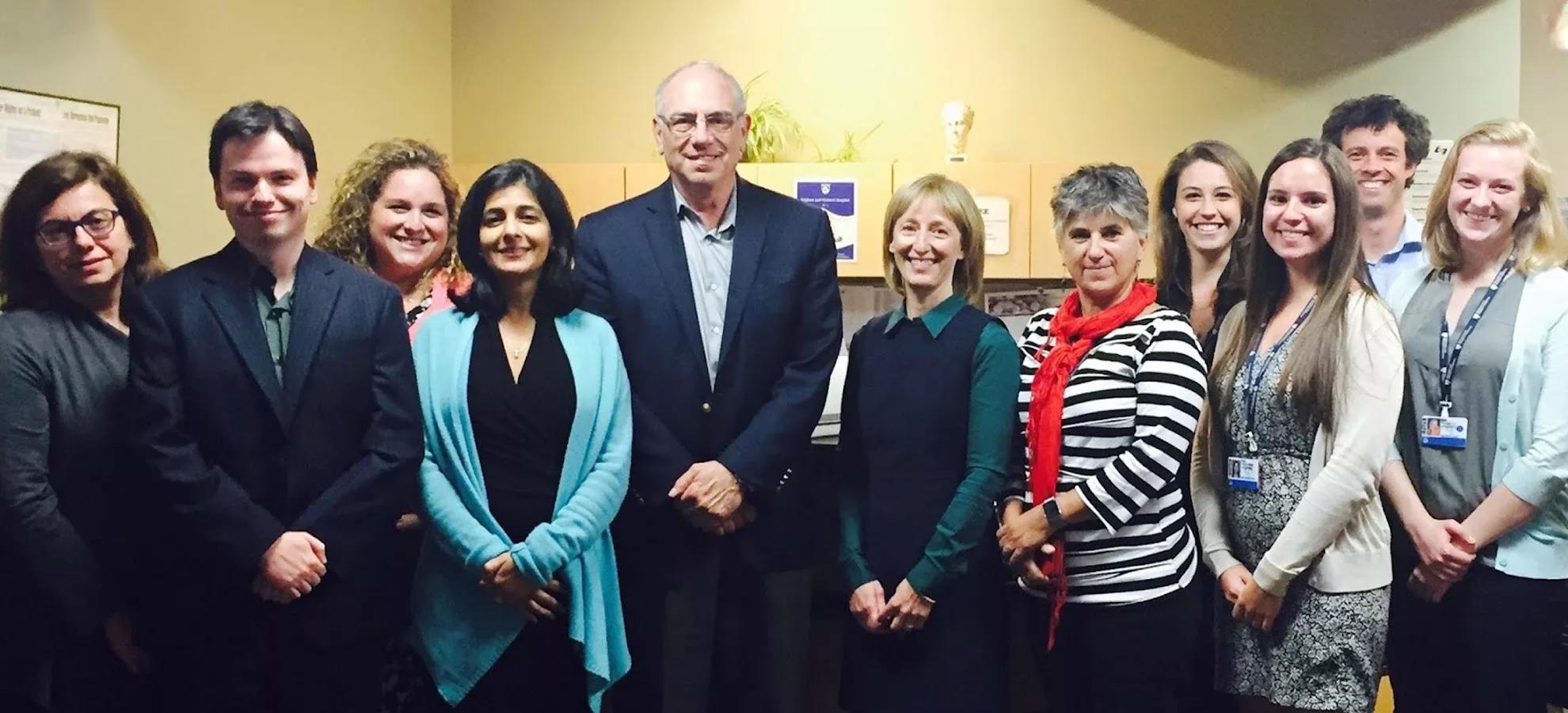Deepening our understanding of MS with biosensors

Deepening our understanding of MS with biosensors
I vividly recall my first week at Verily in early 2015 as I went straight from our two-day orientation to catch a red-eye flight to Boston for a meeting with Biogen and Brigham and Women’s Hospital (BWH). There we discussed the early plans of the SysteMS Study, a research collaboration to further our understanding of multiple sclerosis (MS). It was an exciting moment for me to see a great team of collaborators focused on an ambitious program of research - the plans for SysteMS promised to push the frontiers of MS research by quantifying with new technologies the various clinical, biological, behavioral, and environmental factors that are associated with disease severity and prognosis. Today, I am excited to present the findings of one of our initial studies at MSParis2017.
Two people diagnosed with MS on the same day, with similar symptoms, may find themselves years later with highly varied outcomes.
A diagnosis of any disease can be hard for individuals and the people close to them; if that disease is MS, one of the most challenging aspects can be the unclear prognosis of their condition. Two people diagnosed with MS on the same day, with similar symptoms, may find themselves years later with highly varied outcomes. Currently, patients with MS see their neurologists periodically to perform a clinical assessment of their condition with defined activities (for example, standing still while maintaining their balance or walking 25 feet) while their doctors observe and record any changes. This interaction is rich with data, including some that the human eye simply cannot catch. We speculated that with new measurement techniques we might be able to collect additional signals that would help better assess a patient’s disease status and possibly identify where to probe further for more information.
The 25 participants in our study donned nine sensors, predecessors to our Study Watch, on their bodies while performing standard clinical assessments. As they moved through the exercises, we collected some very interesting data from their wrists, ankles, and other body locations. For example, we noticed minute variations that correlated to disease severity, such as 1-2 millimeters of sway in a participant with less severe disease trying to maintain their balance versus 4-5 millimeters in participants with more severe disease. We also observed that aspects of gait, such as how long participants’ feet stayed on the ground when walking or how sharply and at what angle they perform a 180-degree turn, varied significantly between patients with different disease severity.
Even with better in-clinic measurements, a 20-minute assessment by a neurologist is a small snapshot of an individual’s life and is likely to miss the full picture. For the second phase of our research, we asked the same participants to wear two to three of our sensors while going about their daily lives for eight weeks. This allowed us to capture continuous data to explore if we could detect some of the same informative features from the clinic in a “free-living” environment. We not only replicated our clinical findings around gait, but also discovered additional signals of interest that may become novel digital markers that come to define MS as it manifests in each individual person and that relate to a person’s quality of life. Importantly, these digital markers can be measured in a person’s own environment, without the need to travel to the provider’s office.
We are still active in our research for this program, but it is a pleasure to be able to present the results from our early studies today on behalf of the study team. I’d like to thank the many people involved in this study, particularly the participants who enrolled and their families. Through the information we collected from biosensors in both clinical and non-structured environments, we’ve started to identify both expected and unexpected measures that relate directly to MS severity. We hope that in the future this type of continuously collected data will support physicians and patients as they track MS and make treatment decisions. We have already extended our research to other neurological disorders like Parkinson’s Disease, with a goal of better understanding these conditions and improving disease management.
Brigham and Women's Hospital's related press release is available to view here.